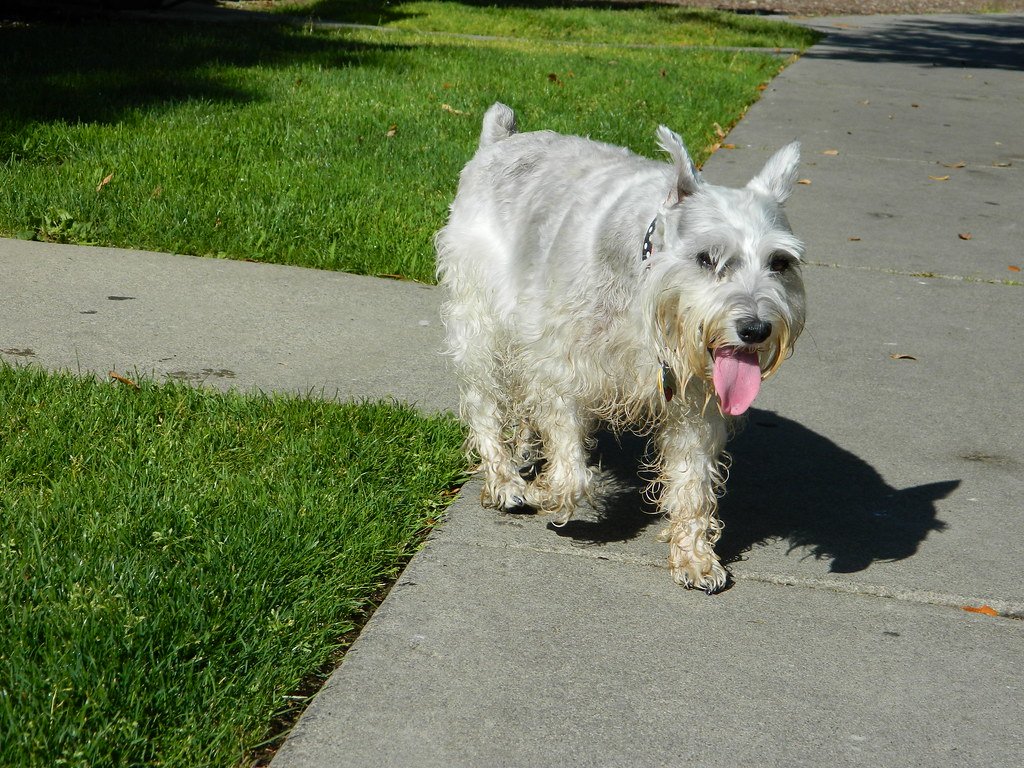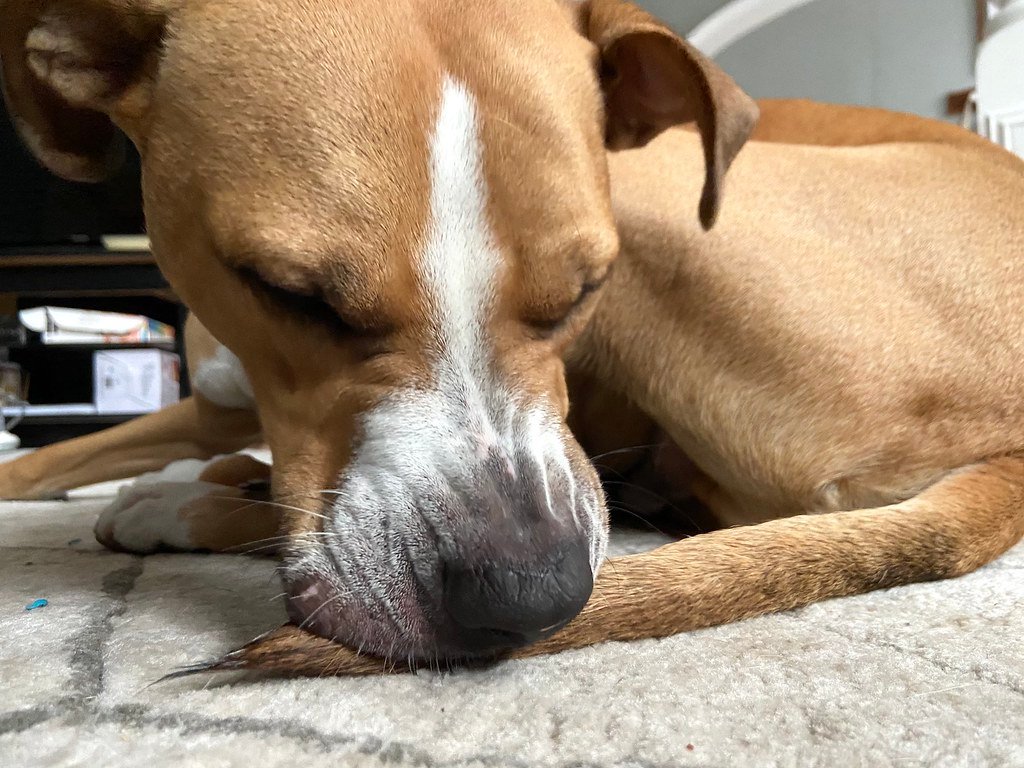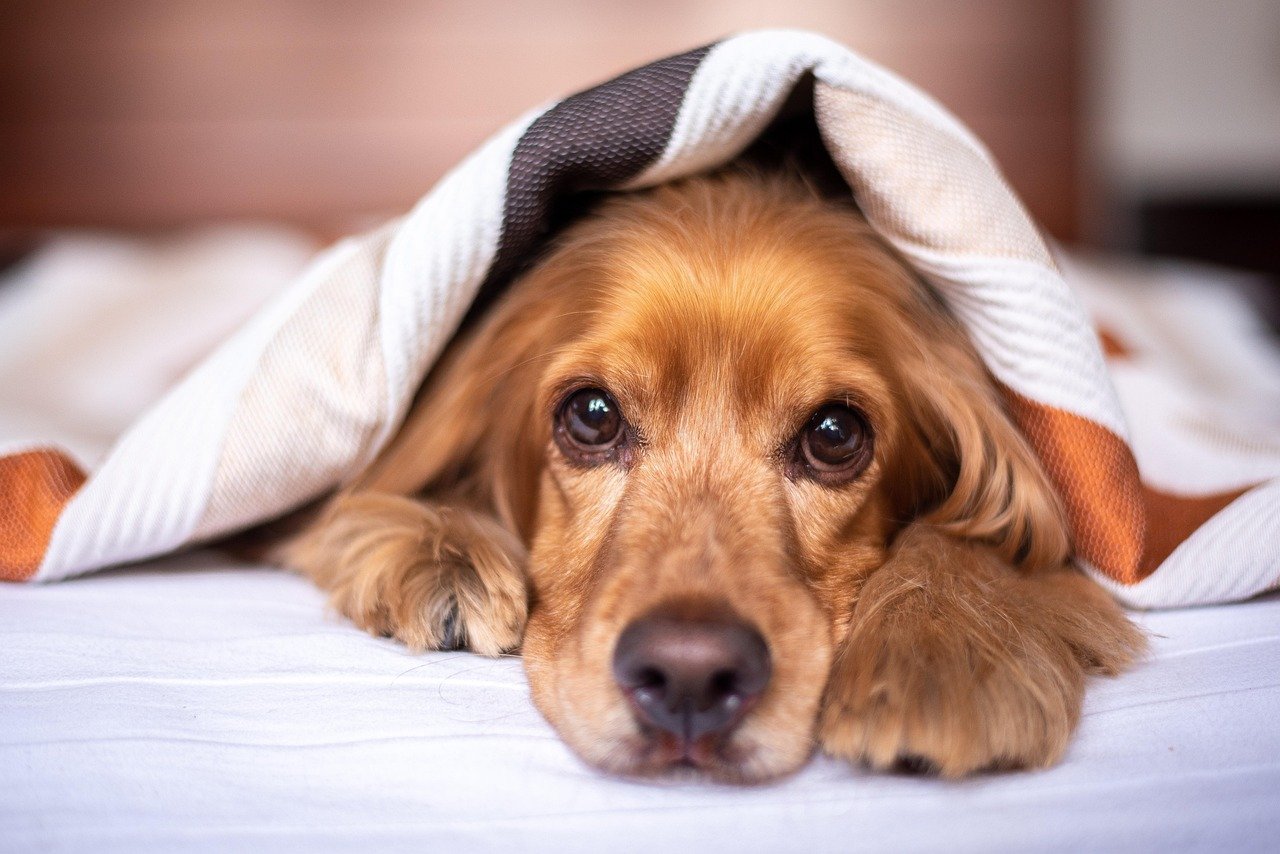Letting your dog sleep in your bed might feel like the ultimate bonding experience—but for some, it can disrupt sleep and even affect health. I noticed I was waking up more tired, dealing with allergies, and getting less restful sleep overall. While cuddling up with your pup feels comforting, setting boundaries can actually improve both your and your dog’s sleep quality. Plus, it helps reinforce healthy routines and independence for your furry friend. If your dog has trouble settling on their own, a cozy bed nearby can be a perfect compromise. It’s not about less love—it’s about better rest for both of you.
The Sleep Struggle: Restless Nights and Disrupted Dreams
At first, I thought having my dog in bed was cute—until the tossing, turning, and little paws poking me at 2 a.m. became the norm. Dogs don’t sleep the same way we do. They move around, change spots, and sometimes even bark or whimper in their sleep. I’d wake up feeling groggy, cranky, and like I hadn’t slept at all. Studies show that pet owners who share their beds with dogs often report poorer sleep quality. It’s like trying to nap in a room where someone is constantly rearranging the furniture. Eventually, I realized I was sacrificing my own rest for a few minutes of snuggles.
Allergies and Hygiene: A Sneaky Source of Sniffles

No matter how clean you keep your dog, they bring bits of the outside world onto your sheets—pollen, dirt, and dander. I started waking up with itchy eyes and a stuffy nose, even though I’d never had pet allergies before. Turns out, sleeping in close quarters with your pet can trigger allergies or make them worse. Plus, dogs can carry bacteria or parasites on their fur and paws, which isn’t exactly what you want where you lay your head every night. It was a wake-up call—a little bit of fresh air and distance can do wonders for your health.
Establishing Boundaries: Why Dogs Actually Like Routine
I used to feel guilty about making my dog sleep in her own bed, but it turns out, dogs thrive on routine and clear boundaries. When I set up a cozy spot for her next to my bed, she adjusted quickly. It’s similar to giving a child their own room—at first, there might be some whining, but they soon appreciate having a safe space that’s just for them. Strong boundaries can help with behavior and make your dog feel more secure, not less loved.
Reducing Anxiety: Helping Your Dog Be More Independent
At first, I thought sleeping together was bonding time, but I realized it was making my dog more anxious when I left the house. She became so used to our constant togetherness that she struggled with separation anxiety. Creating a bedtime routine where she sleeps in her own bed helped her gain independence and confidence. It was like watching your kid go to school for the first time—hard at first, but so important in the long run.
Better Hygiene for Everyone: Clean Sheets, Happy Home
Let’s be honest, dogs are adorable but not always the cleanest. Between muddy paws, shedding fur, and the occasional drool, I was changing my sheets way more often than I wanted. After moving my dog to her own bed, my laundry load lightened, my bedroom smelled fresher, and I could finally enjoy crisp, clean sheets for longer. It’s a small change with a surprisingly big impact.
Protecting Against Fleas and Ticks: An Unwanted Bedtime Guest

Even the healthiest, most pampered dogs can pick up fleas or ticks during walks or playtime. If your dog sleeps in your bed, those tiny hitchhikers can end up sharing your pillow. I’ll never forget the time I found a tick crawling on my blanket—it was the last straw. Keeping your dog off the bed reduces the chances of pests making themselves at home with you.
Personal Space Matters: Reclaiming My Rest

There’s something refreshing about having your own space to stretch out, roll over, or wrap yourself up in a blanket burrito. Once my dog had her own bed, I rediscovered what it felt like to truly relax and unwind at night. My sleep improved, my mood lifted, and mornings didn’t feel quite so rough. Sometimes, loving your pet means loving yourself enough to set healthy boundaries.
Relationship Boost: More Quality Time, Less Frustration

I worried that my dog would feel left out, but the opposite happened. She was happier, more energetic, and eager to jump up for morning cuddles—on my terms. Without the nightly battle for pillow space, our time together during the day felt even sweeter. It’s a bit like missing someone and realizing how much you appreciate them when they’re not glued to your side 24/7.
Medical Concerns: When It’s Best to Sleep Apart
Certain medical conditions make it risky for dogs and humans to share a bed. If you have asthma, eczema, or a weakened immune system, your doctor might recommend separate sleeping arrangements. Similarly, if your dog has mobility problems or incontinence, their own bed can help them rest more comfortably and avoid accidents. It’s a practical choice that puts everyone’s health first.
Tips for a Smooth Transition: Making the Switch Easier
If you’re thinking about changing your dog’s sleeping habits, start slow. Set up a comfy bed close to yours and reward your pup for using it. Be patient—old habits die hard, and there might be a few nights of whining. A favorite toy or blanket can help them feel safe in their new spot. Remember, this isn’t about punishment; it’s about creating a better routine for both of you. The first week might be tough, but stick with it. You—and your dog—will sleep better for it.
At the end of the day, choosing not to let your dog sleep in your bed isn’t about loving them any less—it’s about setting boundaries that benefit you both. Better sleep, fewer disruptions, and even improved behavior can all come from this simple change. Your pup still feels loved and secure, just from their own cozy spot nearby. Sometimes, a little space leads to even stronger bonds.

Linnea is a born and bred Swede but spends as much time as possible in Cape Town, South Africa. This is mainly due to Cape Town’s extraordinary scenery, wildlife, and atmosphere (in other words, because Cape Town is heaven on earth.) That being said, Sweden’s majestic forests forever hold a special place in her heart. Linnea spends as much time as she can close to the ocean collecting sea shells or in the park admiring puppies.





